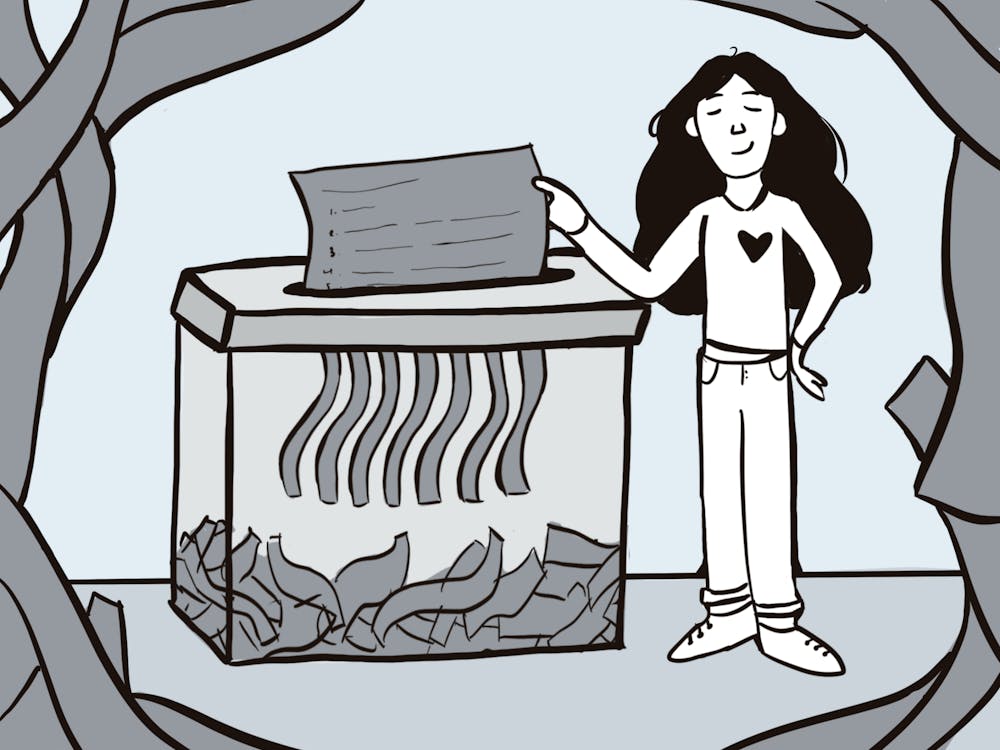For anyone who is not yet familiar with the show, it’s the story of Hannah Baker, who commits suicide and leaves behind cassette tapes of 13 reasons why she made the decision to kill herself, and each of these 13 reasons is a person who receives the tapes.
The internet is divided about many aspects of the show, but the most hotly debated issue seems to be the graphic depictions of sexual assault and suicide.
While I do think the show is definitely more dangerous than helpful to those struggling with these issues, what the vast majority of people who have written on the show have ignored is that the screen adaptation of 13 Reasons Why, regardless of what its creators intended, is not centered around Hannah at all.
Instead, it focuses on the aftermath of her death and the impact of the tapes on her classmates. The result of this is actually very ironic. While the creators justify the graphic depictions of sexual assault and suicide by saying they wanted to keep the show “authentic,” they’re just about the only difficult topics in the show that are portrayed realistically.
Unlike the show’s novel counterpart, the majority of Netflix’s 13 Reasons Why is spent watching people react to the tapes and not on the content of the tapes themselves. Therefore, this is not a show directed at those who identify with Hannah but at those she speaks about on the tapes.
The ultimate effect of this focus is a strong anti-bullying message. However, centering the show on bullying instead of mental health perpetuates dangerous misconceptions about depression and suicide.
A line repeated many times in the show, by all Hannah’s classmates who are on the tapes, is “Hannah’s life was no worse than anyone else’s. She was just a drama queen who wanted attention.”
The general sentiment of this statement, the idea that people who have “good lives” don’t have the right to be depressed, is a very real and very dangerous perception many people have of mental illness.
While life events can certainly aggravate a mental health condition, depression is first and foremost a problem in the chemistry of the brain. The show, however, never mentions anything about Hannah’s mental health and insinuates that the suicide is a direct result of things that happened to her and only things that have happened to her.
This perpetuates the misconception that depression and suicide are just reactions to external factors, and therefore the show validates the belief it is supposedly trying to undermine: “[this person with depression’s] life is no worse than anyone else’s. They’re just a drama queen who wants attention.”
And this is not the only misconception of depression that the show propagates. They talk about the outward symptoms of depression, “a drop in grades, social withdrawal, a change in appearance, stops doing things they enjoy.”
Hannah does all these things, and of course no one notices. However, she is not the only character in the show with depression. Skye — who works at a coffee shop Hannah frequents, is covered in tattoos, wears only black, has colored highlights in her hair, gages and a chin piercing — struggles with self-harm.
It is also implied that she is socially withdrawn, does not get good grades and had a major change of appearance (from “normal” to “goth”) when she began to face challenges with her mental health. While there are people with depression who exhibit all of the pamphlet “warning signs,” and there are people with depression who dress “goth,” these things are by no means characteristic of all people with depression.
Therefore, according to the show, anyone who loves to dress in bright colors, who gets good grades, who has a lot of friends and who is involved in their school or community could not possibly have depression.
This stereotype of depression, coupled with the idea that only people with objectively difficult lives commit suicide, ultimately makes people less likely to seek help and less likely to reach out to those who might need it.
While 13 Reasons Why was certainly well-intended, it is far more directed at those who have the opportunity to help those struggling with depression than the people struggling themselves, and it gives a wholly inaccurate and toxic picture of the mental illness that it is supposedly intended to combat.
Combine this with its graphic nature, and the result is a destructive mess made out of a story that, in its novel form, touched thousands of lives.























Please note All comments are eligible for publication in The News-Letter.